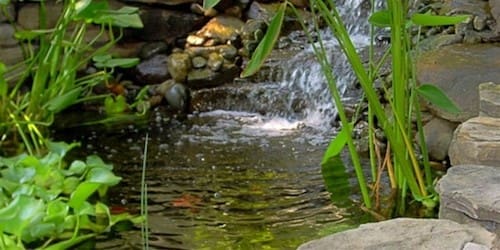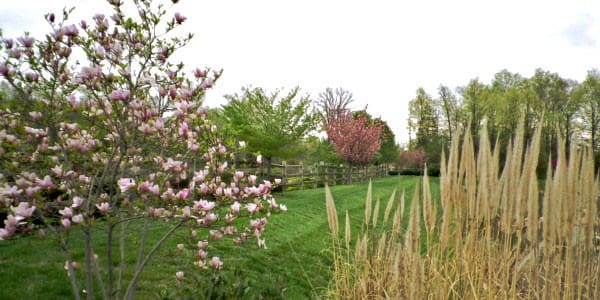
If you own a home, chances are at some point weather conditions, perhaps too much rain, ice melting, or even wind, have caused drainage and erosion issues on your property. Quality drainage and erosion solutions are especially important during the heavy summer rains we get here in Fairfax, VA and throughout Northern Virginia.
How do you know if you have drainage and erosion issues? Exposed roots, gutted out areas on your lawn, or swampy and puddled sections are a clear sign that it’s time to act and stop the damage from getting worse.
This is where a professional landscaping company can help. It’s crucial to assess the issue as soon as possible to come up with the best plan for preventing further damage. The professionals at Sunrise Landscape and Design can provide an accurate diagnosis of the damage and help you make the right decision, saving you time, money and your landscape.
Add Plants
The easiest and possibly the most cost-effective way to battle an eroding yard is to plant, plant, plant! Flowers and trees act as a shield, lowering the impact of rainfall, ice, and wind that can wash away the soil. These plants and trees also help hold the dirt in place with roots that anchor the soil and soak up excess water. Be sure to plant flowers and trees native to Fairfax and Northern Virginia (we can help with that too) so you can be sure they’ll do well. Wild flowers, herbs, and shrubs are also good for blanketing areas prone to soil erosion.
Once you plant, it’s a good idea to add a layer of mulch and fertilizer. This will help the ground absorb water. Frequent mulching is key, not only because it adds an extra layer of protection and insulation, but also because it contributes higher levels to the PH of the soil.
Redirect the Water
A major hazard to your lawn’s health is when your home is on a slope and has poor drainage. Inadequate pitch or a slope in your yard will allow the water to pool and not be piped away from your property. Find where the issue might REALLY be originating before you dive deep into the solution. The solution might be as simple as redirecting a down spout or running the discharge pipe from your sump pump to a different location.
There are many creative ways to correct Fairfax drainage issues and Sunrise Landscape and Design has the experience and vision to solve the problem and at the same time enhance the beauty of your landscape. Some of our favorite solutions include retaining walls, rain gardens, and dry creek beds.
Retaining Walls
Retaining walls can be both aesthetic and functional. While their primary purpose is function, a well-designed retaining wall can be a beautiful element in landscape design. Flower beds, terraces, stone work, and many other options are all creative drainage solutions.
Rain Gardens
Rain gardens can be created by covering a low, wet area with water tolerant plants. Perennials and shrubs that tolerate pooling water and can withstand drought are perfect for rain gardens. Make sure to locate the garden at least 10 feet away from the home to prevent water seepage into the basement.
Dry Creek Beds
Dry creek beds are an attractive way to channel water from heavy down pours and prevent those gutted out areas in your landscape. Attractive river rock, 1-1/2 inch in diameter is a great start and can be enhanced with larger decorative rocks.
Contact Us
If you suspect you have any of these issues contact us for a personalized quote. We’ll be happy to come by and help you either prevent any impending damage or stop the progress of existing wear and tear on your valuable landscape investment.
Read more about our Fairfax and Northern Virginia Drainage and Erosion solutions.








